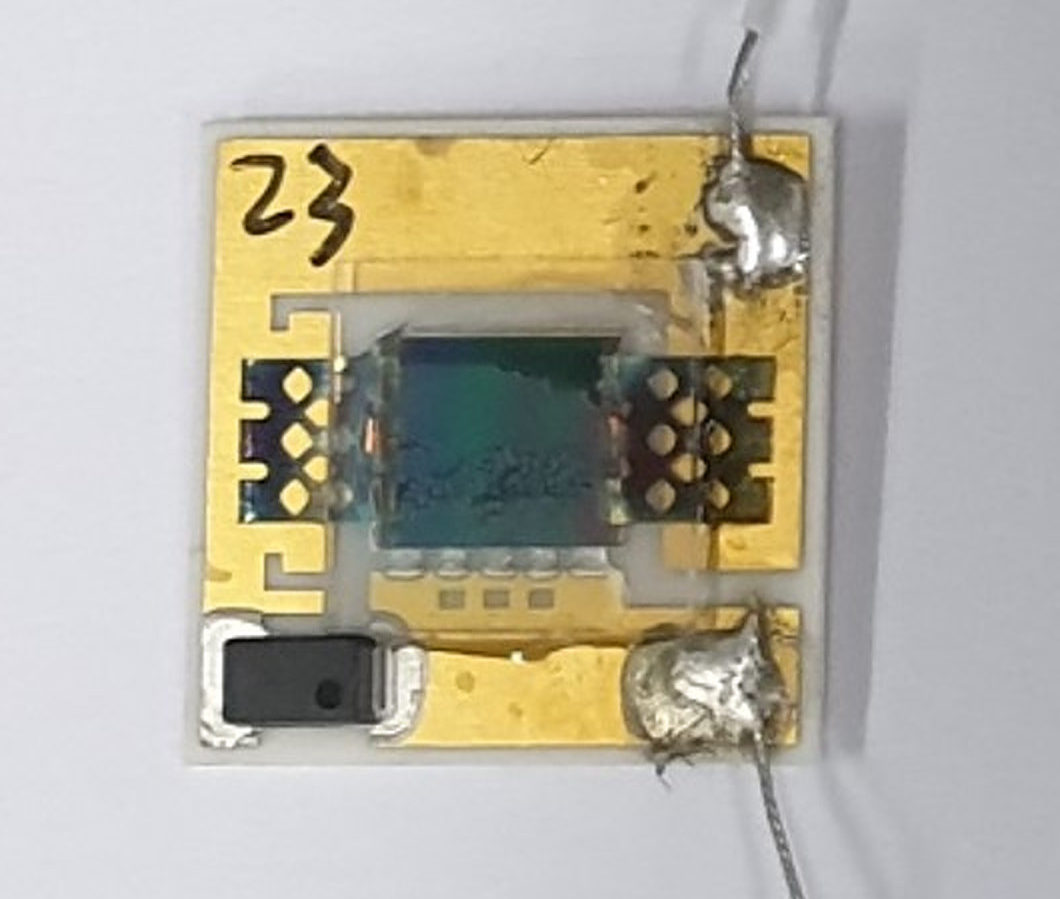Scientists from the Pusan National University in South Korea have developed a multi-junction solar cell that integrates a radiative cooler aimed at reducing cell temperature and increasing power yield.
“Our radiative cooler technology may be applied to all kinds of solar cells but it is most suitable for multi-junction solar cells with low bandgap, as it is the least vulnerable to sub-bandgap heating” the research's corresponding author, Gil Ju Lee, told pv magazine.
Radiative cooling is the principle all objects on Earth tend to emit part of the heat they receive from the sun’s infrared radiation. The atmosphere pushes that heat back to Earth, except for infrared wavelengths, which can escape the atmosphere.
The triple-junction solar cell was based on indium gallium phosphide (InGaP), gallium arsenide (GaAs), and Germanium (Ge) and was made with a micro-grating made of glass, consisting of a two-dimensional x-framework structure fixed onto the surface of the solar cell. This structure is claimed to be able to efficiently emit the heat produced by the cell through the atmosphere into outer space. “Our research is the first theoretical and experimental demonstration of the effectiveness of radiative-cooler-integrated solar cells,” the scientists stated.
A clear and transparent ultraviolet curable adhesive was used to connect the cell with the cooler and no anti-reflection coating was applied on the cell. Gold metal was meshed on the device's topside and plated on its bottom side, with sapphire being used as the substrate. “The solar energy gain is considerably increased, particularly at the glazing angle, owing to the elongated optical path produced by the diffraction of the
light-trapping radiative cooling (LTRC),” the researchers explained.
The performance of the solar cell with the radiative cooler was analyzed through outdoor field tests under approximately 900 Wm-2 direct sunlight and was compared to that of a reference cell without the cooling technique. The operating temperature of the device with the cooler was found to be 6 degrees Celsius lower and its open-circuit voltage 2% higher. It also showed a higher short-circuit current of 0.5 mA.
“Our radiative cooler is based on a very cheap glass material,” Lee further explained, referring to the costs of the proposed technology. “An additional treatment should be added in the glass material to make a micro-grating two-dimensionally on the surface of the glass and, however, it might not be expensive because the glass is cheap and the technology for the micro-grating is mature.”
He also mentioned the possibility of using the radiative cooler to replace encapsulants in solar cells, which would more than offset its additional costs, according to the researcher. “The radiative cooler may offer the same degree of protection,” he emphasized, noting that the integration of the cooling technology in commercial solar module production may be achieved easily, with bigger scales helping further reduce the costs of the coolers.
The new tech was presented in the paper Determining the Effectiveness of Radiative Cooler-Integrated Solar Cells, published in Advanced Energy Materials. “The radiative cooling approach presented in this study is effective especially for the multi-junction solar cells and also for concentrating photovoltaic cells,” the scientists concluded.
Radiative cooling was recently applied to solar panel cooling by researchers from the Purdue University in the United States, the Catalan Institute of Nanoscience and Nanotechnology and the Instituto de Ciencia de Materiales in Spain, and the Jordan University of Science and Technology and the Australian College of Kuwait.
A group of researchers from at the Shanghai Jiao Tong University in China has recently conducted a review of the possible combinations between radiative cooling (RC) techniques and solar energy systems of different kinds
This content is protected by copyright and may not be reused. If you want to cooperate with us and would like to reuse some of our content, please contact: editors@pv-magazine.com.




1 comment
By submitting this form you agree to pv magazine using your data for the purposes of publishing your comment.
Your personal data will only be disclosed or otherwise transmitted to third parties for the purposes of spam filtering or if this is necessary for technical maintenance of the website. Any other transfer to third parties will not take place unless this is justified on the basis of applicable data protection regulations or if pv magazine is legally obliged to do so.
You may revoke this consent at any time with effect for the future, in which case your personal data will be deleted immediately. Otherwise, your data will be deleted if pv magazine has processed your request or the purpose of data storage is fulfilled.
Further information on data privacy can be found in our Data Protection Policy.